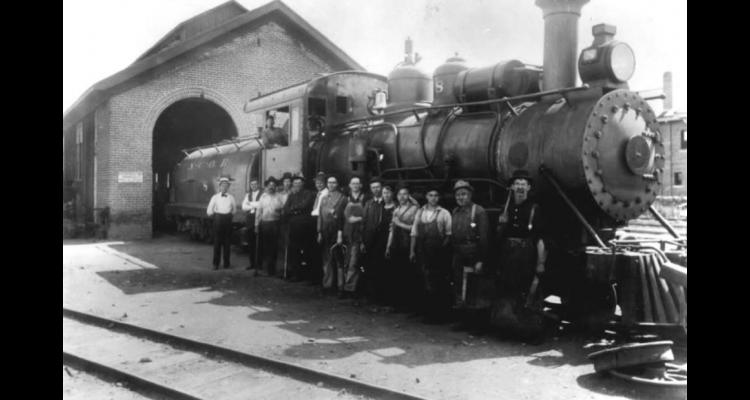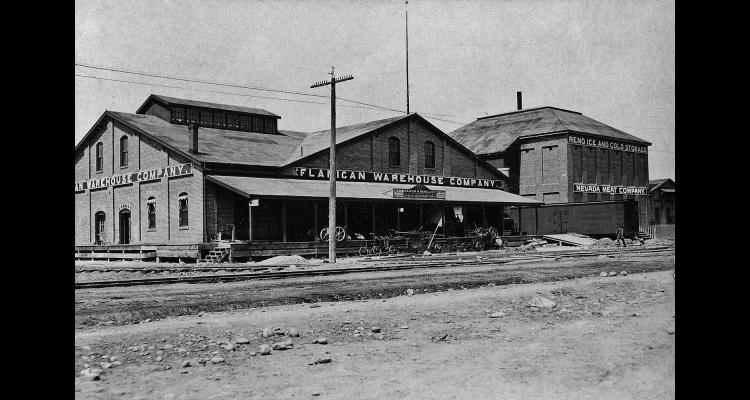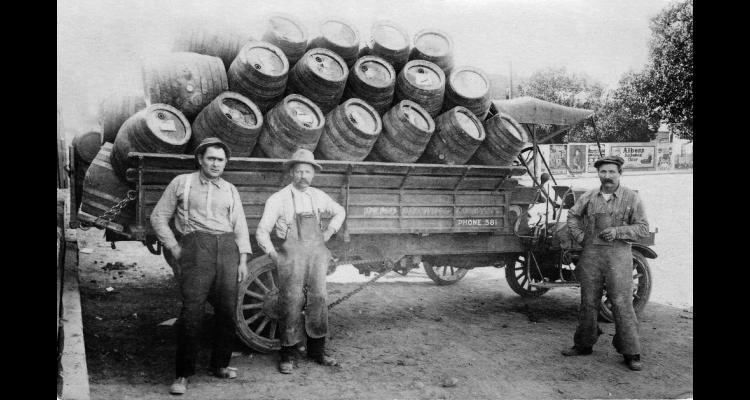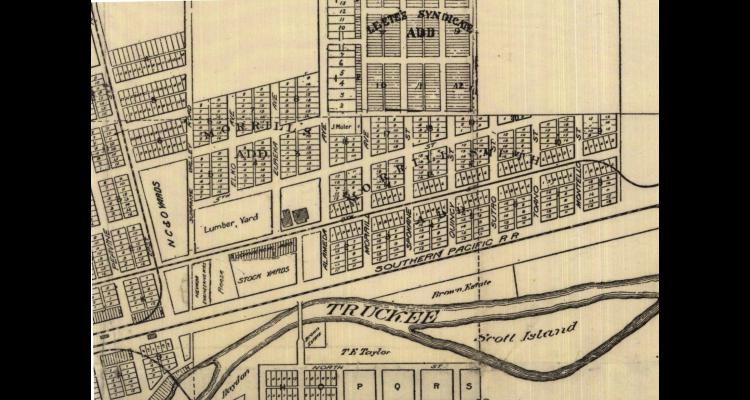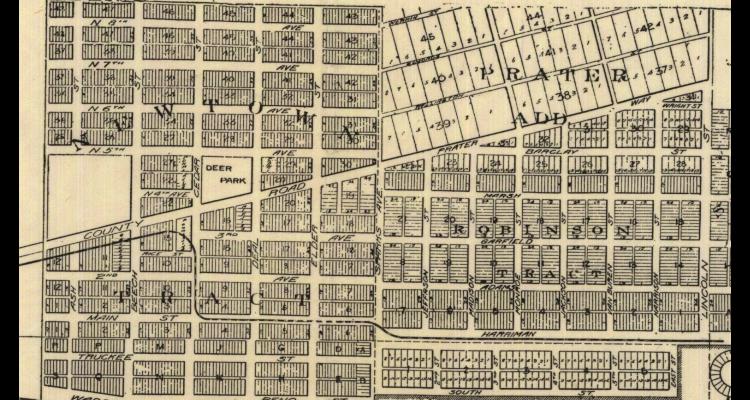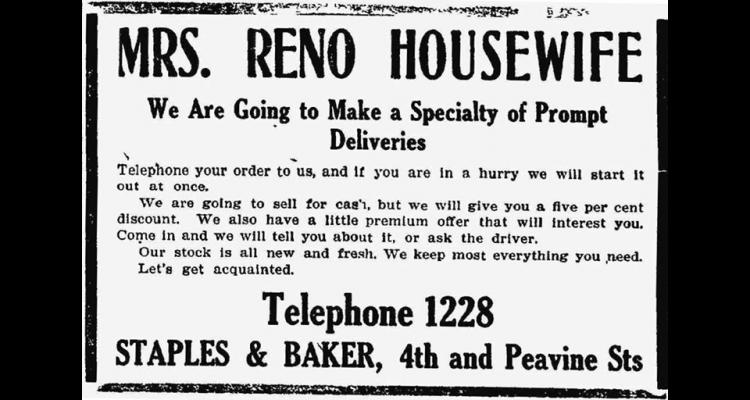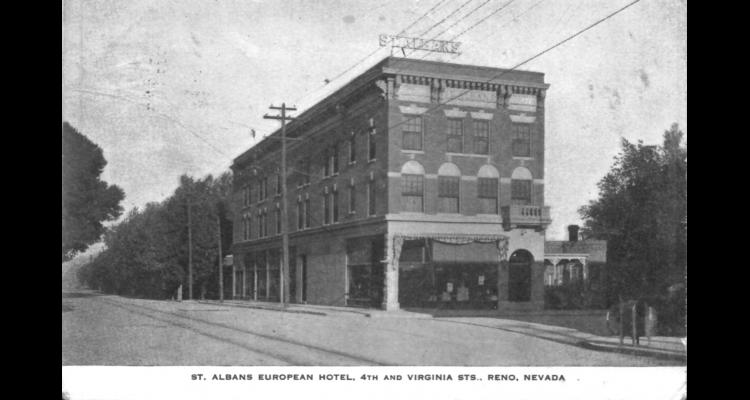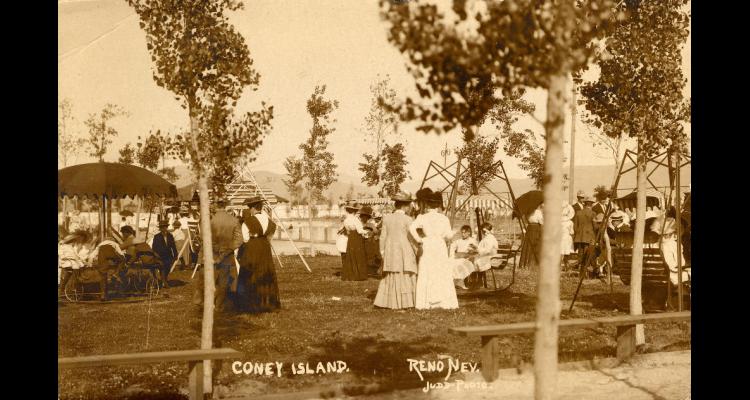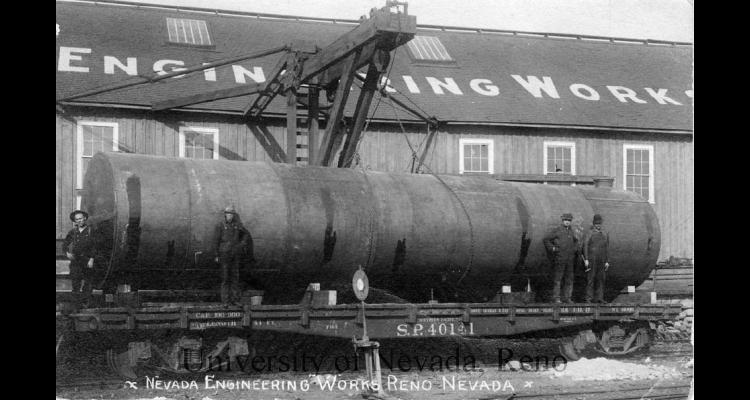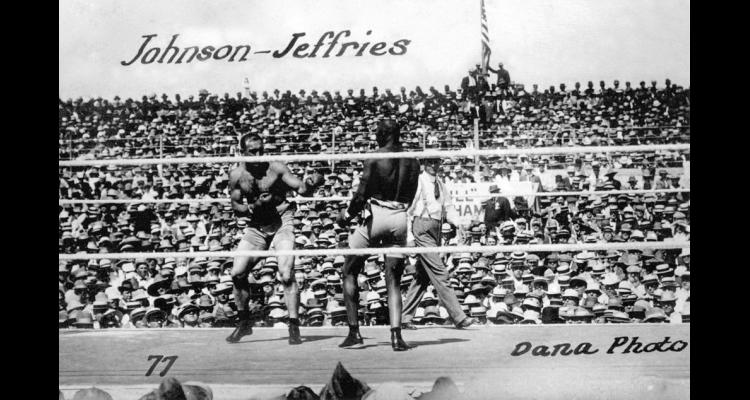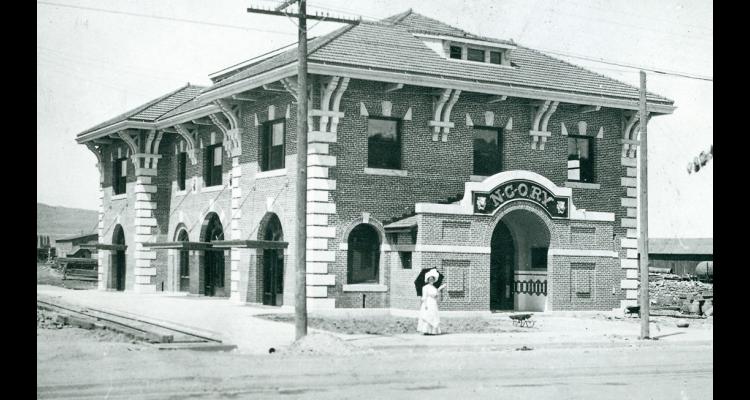Founded 36 years apart, Reno and Sparks were linked by a rough ribbon of road and a shared railroad heritage.
At first, there was no corridor, just a modest stretch of road in the new town of Reno, founded in 1868 by the Central Pacific Railroad. Early development centered near the tracks along Commercial Row and continued southward toward the Truckee River. Located one block north of the rail line, 4th Street was somewhat removed from the primary rush of commercial activity. For decades, it developed slowly, home to wood frame houses, carriage and blacksmith shops, and at the corner of Lake Street, Mount St. Mary’s Academy.
Just east of the emerging business district, the Truckee curved northward and the railroad line hewed close to its bank. Fourth Street ran parallel to the tracks, continuing eastward as a dusty county road traveled regularly by wagons heading to and from the small pioneering community of Glendale, area farms and ranches, and the Nevada Insane Asylum, a looming edifice in the distance.
The Industrial Development of East Reno
With its proximity to local commerce and the railroad line, the eastern stretch of 4th Street soon became a hub of industrial activity. The Comstock Lode, a pillar of the town’s early economy, declined in the 1880s, but Reno remained an important western crossroads. It was a role further reinforced by the continued operation of the Virginia & Truckee Railroad and the establishment in 1880 of the Nevada & California Railroad (later renamed the Nevada-California-Oregon). The new Reno-based line located its roundhouse and machine shops on the north side of East 4th Street, laying down a network of spur tracks that transported goods directly to the loading docks of the district’s budding industries.
By 1902, those businesses included the two-story Flanigan Warehouse, where owner Patrick Flanigan stored millions of pounds of wool at a time. Next door, the slaughterhouse of the Nevada Meat Company processed area cattle, sheep, hogs, and chickens for local use and shipment across the country. Across the street, the planing mill of the Reno Mill & Lumber Company sawed fresh timber from the slopes of the eastern Sierra. And steps away, workers at the Reno Brewing Company manufactured and bottled lager for delivery throughout town and beyond. Smokestacks and stockyards, the hiss of steam and the piercing shriek of a train whistle, these were the sights and sounds of a small but prosperous community.
The Founding of Sparks
To the east lay a sleepy patchwork of alfalfa fields and open land, with little expectation of rapid development. That changed instantly in 1902 when Edward H. Harriman, new owner of the Southern Pacific Railroad (successor to the Central Pacific) announced plans to realign the railroad’s route to make it straighter and more efficient. The adjustment would require moving the Southern Pacific roundhouse and machine shops away from their existing location at Wadsworth, a small community 30 miles east of Reno (just northwest of present-day Fernley).
Area residents eagerly awaited word on Harriman’s choice of a new location. After dismissing Reno as too expensive, and Truckee as too close to the mountains, Harriman settled on a site just a few miles east of Reno, in an area originally bypassed by the railroad due to its tendency to flood during the spring runoff. Moving the shops there would entail filling in the wetlands and moving the existing tracks in the vicinity southward, leaving behind a flat, cleared right-of-way.
The news took the local real estate community by storm, and nearby ranches became immediate targets for development. Aspiring developers purchased all available properties in what they first termed “East Reno,” subdividing them into residential lots for sale. In March 1902, the lower Winfrey Ranch was purchased by the real estate company Ingalls, Hibbard, and McPhail, who carved from it the New Town tract. Its centerpiece was a square initially known as Highland Park, later named Deer Park after the introduction of a small deer herd. The park bordered the old railroad grade and the county road that ran alongside it. As the railroad company began plans to fill the nearby wetlands with 18 inches of rock and gravel, the trio advertised their new development as “high and dry.”
On the east side of the New Town tract, Celia and Nick Prater, successful shopkeepers from Virginia City, purchased the Ham Ranch and divided it into lots. Sales of sites in their new Prater Addition began in August 1904, just one month after the entire town of Wadsworth began to relocate to the fledgling community now officially named Sparks. The three-block extension of county road south of the Prater Addition took on the name of Prater Way. To its south, the Robison Tract extended all the way to Harriman Avenue, which later became B Street (Victorian Avenue).
Schools and Streetcars
Just five blocks north of the Southern Pacific shops but far removed from its noise and traffic, the old right-of-way was ideally suited for Sparks’ first permanent school house. Numerous developers offered land to the school district, which ultimately took out a 99-year lease of a site on Prater Way, where the two-story Sparks Grammar and High School was completed in late 1905. When school commenced in January 1906, the building’s 800-pound bell could be heard from a distance of six miles, beckoning students across town.
The founding of Sparks invigorated ongoing efforts to establish the state’s first streetcar line. With easy commuting between the two towns a clear necessity, the Nevada Transit Company (later the Reno Traction Company) succeeded in establishing the three-mile line, which opened for business on Thanksgiving Day, 1904. Its route set out eastward from Reno along 4th Street, followed County Road to Deer Park, turned south on Cedar Street (today’s 18th Street) then east again on Main Street (Victorian Avenue) to the railroad yards. Additional routes followed.
The tracks spurred the creation of additional subdivisions along County Road and East 4th Street, clustered around the city limits of each community. Near the western boundary of Sparks and just north of the Asylum grounds, East Reno Heights and the Humphrey Tract soon boasted streets with the pastoral names of Field and View and a pleasure resort called Wieland’s Park, later known as Coney Island. On the Reno side, the Morrill-Smith Addition laid out the seven blocks eastward from Alameda (Wells) Avenue to just past Montello Street.
The Rise of Tourism
At the same time, commercial uses began to pepper the industrial spaces of East 4th Street. With the center of town rapidly filling up, proximity to the railroad lines became an ever more valuable commodity. In 1907, two brick hotels opened in quick succession at the corner of East 4th and Peavine Street (Evans Avenue). Founded by a stone mason and a blacksmith, respectively, the Hotel Richelieu and the Royal Hotel each boasted two floors of rooms, with a series of markets, bars, and restaurants on the ground floor. St. Alban’s Hotel, on the corner of East 4th and Virginia Streets, followed in 1908.
These new hotels catered to a variety of customers, some drawn to Reno by Nevada’s generous divorce laws, which enabled the dissatisfied and disillusioned to sever all marital ties after residing in the state for just six months. By 1909, newspapers across the country were calling Reno “The Divorce Capital of the World,” a role that local residents soon would recognize as an economic windfall.
Still, nothing brought the national spotlight to Reno like the heavyweight championship fight between Jim Jeffries and Jack Johnson, held on the 4th of July, 1910. Many offered their property as an arena site, but the fight’s promoters chose a flat piece of land owned by Patrick Flanigan near city limits on East 4th Street. On the fateful day, scores of regular and special trains, automobiles, and pedestrians converged on the arena, exiting even more rapidly after Johnson delivered a forceful defeat of Jeffries, the crowd favorite. Informed that Reno was not a contender for any future major fights, promoters had the massive arena torn down just months later to pay off debts incurred during its rapid construction.
The summer of 1910 also marked the end of wide-open gambling in the state of Nevada—or so its citizens thought. Although the practice had been tolerated in Nevada since the frontier days, Progressive reformers successfully pushed through a ban on the practice, effective October 1910. With a beautiful new Nevada-California-Oregon railway depot designed by architect Frederic DeLongchamps, bustling hotels, flourishing industries, an electric streetcar line, and peaceful neighborhoods, the corridor seemed poised to embrace the modern era.
